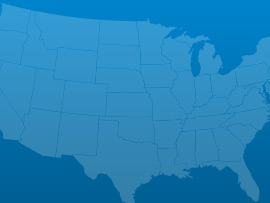The condition of Utah’s more than 900 dams has improved in the last two decades with most being in satisfactory or fair condition. Impressively, 100% of the state regulated dams have emergency action plans in place. However, around 106 are not currently rated or are in need of rehabilitation to meet current standards. Utah also has 252 high-hazard dams, which pose risks to life and property if failure occurs. As dams approach the end of their design lives with downstream demand and development increasing, currently low risk dams are gradually becoming high risk dams through urban encroachment. At the same time, as the risks associated with dam failures increase, their necessity becomes even more critical in managing water resources. Utah also faces unique dam safety challenges in regards to dam ages, regional seismic risks near population centers, and a continuing trend of urban growth in the flood paths of potential dam failures/breaches.
 Bridges
Bridges Canals
Canals Dams
Dams Drinking Water
Drinking Water Hazardous Waste
Hazardous Waste Levees
Levees Roads
Roads Solid Waste
Solid Waste Transit
TransitA: Exceptional, B: Good, C: Mediocre, D: Poor, F: Failing, ?: Incomplete
Each category was evaluated on the basis of capacity, condition, funding, future need, operation and maintenance, public safety, resilience, and innovation
Aviation
36 public-use airports
Bridges
117 of the 2,974 bridges are structurally deficient
Bridges
$10.70 million in bridge funds came from the Federal Highway Bridge Fund in 2011
Dams
100% of the state regulated dams have an Emergency Action Plan
Dams
201 high hazard dams
Drinking Water
$3.7 billion in drinking water infrastructure needs over the next 20 years
Energy
1.476 gigawatt-hours of renewable energy every year, ranking it 43rd
Hazardous Waste
15 sites on the National Priorities List
Levees
72 miles of levees
Public Parks
$356.0 million of unmet needs for its parks system
Rail
8 freight railroads covering 1,356 miles across the state, ranking 38th nationally by mileage
Roads
4,692 of the state’s 45,891 public roads are major roads, and 4% are in poor condition
Roads
$527.0 million a year in costs to motorists from driving on roads in need of repair, which is $295 /yr per motorist
Schools
$3.1 billion in estimated school infrastructure funding needs
Transit
40.3 million annual unlinked passenger trips via transit systems including bus, transit, and commuter trains
Wastewater
$2.9 billion in wastewater infrastructure needs over the next 20 years

March 03, 2017
As the President’s repeated in his address to Congress his pledge to dramatically increase infrastructure spending to the tune of $1 trillion, various Congressional Committees

March 01, 2017
On Tuesday night, President Trump addressed a joint-session of Congress for the first time in his presidency. Infrastructure was among the many issues he discussed.

February 28, 2017
U.S. motorists set a new record for vehicle miles travelled (VMT) in 2016, driving over 3.2 trillion miles, an increase of 70 billion miles from

February 17, 2017
Romantic dates, the Grammy awards and celebrating black history are not the only milestones of this week; the Oroville dam crisis in California and the